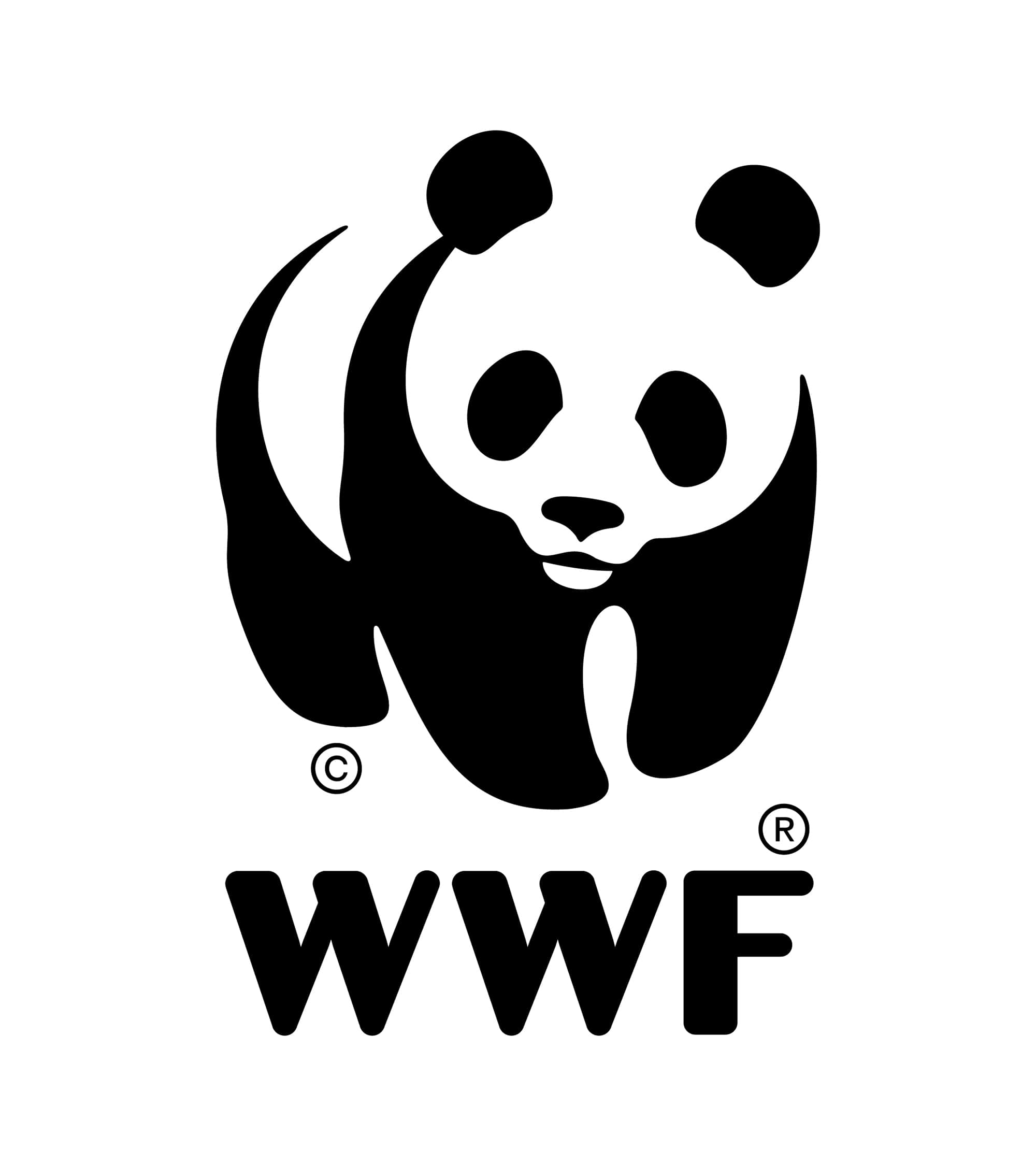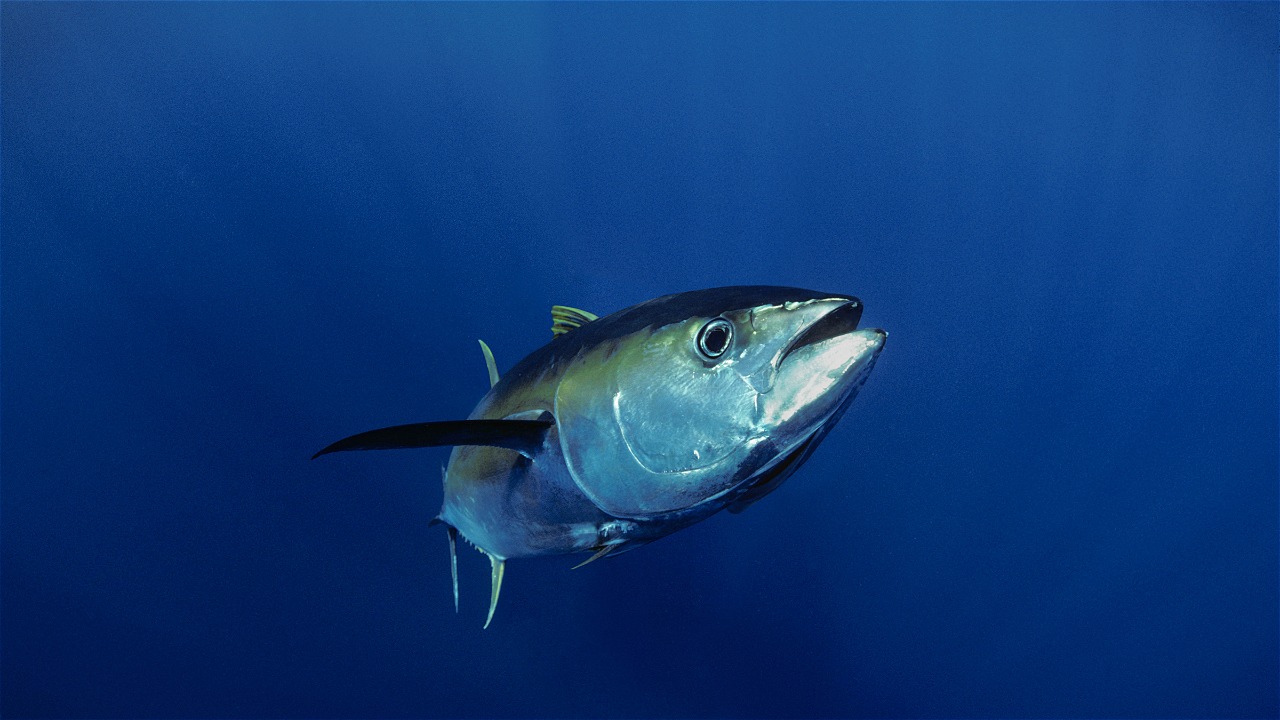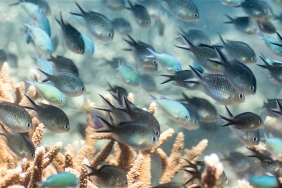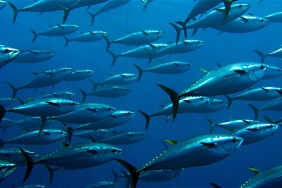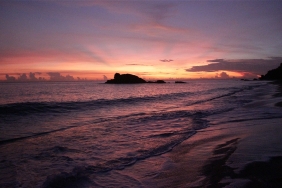TUNA SEASON IN FLORES SEA WATERS
Dwi Ariyogagautama or who is familiarly called Yoga has been working at WWF Solor Alor Project as Fisheries Officer for almost 3 years. Together with other WWF teams, he tries to develop responsible and sustainable fisheries, especially tuna fisheries. This Diponegoro University Marine Science graduate is active in the Marine Diving Club (MDC) scientific diving club.Profile...
By Dwi Ariyogagautama
Finally, after 6 months of tuna fishermen going through a long tuna lean season this year, there was encouraging news from tuna fishermen in Kabir Village (Alor district) with their catch of 11 tuna with an average weight of 50-60 kg per day. This for them is the beginning of the tuna season in the Flores sea waters, quite reasonable why they say this is just "The Beginning", because usually during the tuna season the catch of fishermen in this village can reach 1 ton / day. (red: what kind of fish is rice?)
Tuna is one of the migratory species, like whales and sea turtles, tuna roam the Pacific Ocean and pass through the Sawu Sea in their life cycle. The districts of East Flores, Lembata and Alor, which we shorten to "Solar", are home to two major tuna species: yellowtail tuna/Madidihang/Serea/Yellowfin tuna and big eye/Big eye tuna. This region is the entrance corridor for all types of biota that travel from the Flores Sea to the Sawu Sea or vice versa. We often call it bottle neck, according to the meaning of this analogy is like a bottle neck that is smaller than the body of the bottle itself, which is the potential fishery resources spread across the vast ocean, then concentrated in a narrow area between the straits between the islands of the 3 districts. Therefore, tuna whose migratory path is confirmed to pass through the corridor, face the challenge of avoiding threats from fishermen with their spy hooks and FADs that are randomly scattered in these waters.
For fishermen, the so-called peak tuna season means that it coincides with the time when tuna are passing through this area on their migration. Another pressure in addition to centralized tuna fishing is that spawning tuna are often found during the tuna season, which means (without being based on any paper!^^) that the tuna spawning area must still be in NTT waters, given the size of the eggs found in the tuna caught, which are 25 cm long on average. The tuna spawning area in the NTT waters must be in the NTT waters.
Okay back to the main idea, but this year somehow the tuna famine season this year is getting longer, previously the season lasted from 5 months starting from March-July every year, but this time it lasted until early September. While the peak tuna fishing season is usually November-February, this year it is still unknown whether the timing has shifted as well. This incident does not take place in the Solar region alone, tuna fishermen in Wakatobi also experience the same difficulties, usually the tuna season is only 1-2 months difference between Wakatobi and Solar.
Climate change is clearly affecting tuna migration patterns indirectly, both through changes in the timing of the west and east monsoons and the lengthening of the transitional season in this region. But the most important thing is how we adapt to climate change, by reducing our own pressure factors. This solution is not new, but just to remind you.
- Regulation of fishing gear
This is the most basic, fishing rod or handline is definitely recommended in tuna fishing. Fishing rods are the most selective and environmentally friendly fishing gear, but wait a minute, don't forget the size of the tuna caught and the number of fishing gears operated make this equally inadvisable.
Technically, the depth of hook use and hook size determine the size of the tuna caught. Surface fishing, although selective, can undoubtedly get bycatch, such as dolphins.The number of fleets is certainly a lot of fishing gear used, plus the more diligent fishermen make efforts. The local government must be firm in limiting this, then what about the fishing gear longline???? Since seeing the traditional fishing of our fishermen who are so good with makeshift fishing gear but get a lot of results, especially longlines. I still don't agree with the existence of longline as environmentally friendly as any.
- Regulation of fishing aids
I'm more inclined in the context of regulation of FADs, actually this has been regulated in Kepmen 30 of 2004 which regulates installation permits, namely:2 - 4 nautical miles à Regency/City Marine Fisheries Service
Above 4 - 12 nautical miles à Provincial Marine Fisheries Service
Above 12 - 200 nautical miles à Directorate General of Capture Fisheries, KKPBut is this adhered to by the island districts? The answer is clearly not applicable (*in some areas). Regional autonomy makes this futile, each district's policy of pursuing the demands of Regional Budget Revenue (PAD) justifies the installation of as many FADs as possible to catch as much tuna as possible *Huh!*. Collaborative or joint use of FADs is better than multiplying private FADs that tend to be prone to social conflict.
- Regulation of catch areas
I admit that it is very, very difficult to divide fishermen's catch areas, even with the concept of zoning in MPAs. Restriction of fishing time in certain areas when tuna spawn is also still a dilemma between economic and conservation interests. However, according to the facts in the field, the use of purse seine in FADs is very unconservative, and often even found meshes < 2 inches. In addition to depleting small pelagic fish resources, it also causes conflicts between fishermen because tuna food has been swept away so that tuna is difficult to find again on FADs.Although it has been regulated that there is no longer an extension of the license for ships with purse seine, it is still in the field that ship captains outsmart it by cutting the size of the purse seine to half, which can be called a mini purse seine. Whatever the shape and size, purse seine, there should be a policy of not allowing the use of purse seine/mini purse seine combined with FADs.
- Reducing product demand (market demand)
I like this one best, as any form of exploitation of marine resources is largely determined by market demand. Although there is a campaign to consume green products, which means that the product is caught in an environmentally friendly way, recorded, minimal bycatach, catchable size (adult and not spawning) and licensed, we also need to pay attention to the source of the stock in nature. If we consume just one or a few types of marine products such as grouper, tuna and lobster, it is certain that the previously large stock will be reduced. It would be wise if we consume seafood products that are still widely stocked in nature. Please download the guide to consume Seafood wisely (Seafood Guide) - Revoke the business license of entrepreneurs who are involved in the destructive tuna trade
This is still related to point no. 4. this is my experience in the field. Companies will continue to look for tuna products for marketing, the problem will arise when the demand for products, especially exports, increases, while the capacity of tuna fishermen in the region is limited, in various ways taken by rogue companies. Starting from the lowest level, namely mining the fleet, bringing in fishermen from other regions, to the worst level using any fishing gear including using bombs or potassium. They also have tricks so that the product cannot be identified as bomb or potassium by any consumer. Even if the product obtained has damaged parts, the damaged parts will be sold in the form of meatballs or canned tuna. In fact, they were sold in Surabaya. Who knows anyway?The firmness of the government to investigate and revoke the license of this company is highly expected. Don't expect a demonstration first or a new black campaign. Don't be afraid to lose your period's PAD, but think about the continuity of your region's PAD in the future.
- Award to fishermen for catching non-spawning and mature tuna
So far, fishermen have assumed that catching more is better than less with good price and quality, because the price of the product is the same or not significantly different. Determining the market price is complex, but by only buying environmentally friendly products that are slightly more expensive, we hope that the company will also slightly exceed the purchase price of fishermen with good products, especially those that are large and do not lay eggs.Award is not always with money, social awards from family, village government and local government are also very effective..especially by getting honorary titles. It depends on whatever becomes valuable in a particular society.
- Development of cold chain in tuna fishing ground area
In supporting this quality product, it is clear that there is a need to pay attention to the catch of many but the price is low, it is also a waste of fish resources and the economy of the fisherman. Improvisation of companies and fishermen in overcoming the cold chain needs to be supported. My current project is to make tuna preservation hatches with fish carpets on traditional boats. It is designed to be as flexible as possible so that it can be moved according to the fishermen's wishes. Doakeun smoothly guys. - Policies that synergize between administrative regions
This is a classic, between districts in 1 province can have different policies. Even opposite, so no matter what you say about management in one area but other areas do not synergize, the management will not be effective. Now this tuna fisheries corridor district is the key to the success of tuna fisheries management.
Hopefully, tuna fisheries in Indonesia will be more wisely managed, unlike the fate of other tuna brothers such as Blue Fin Tuna which is increasingly rare to this day.
